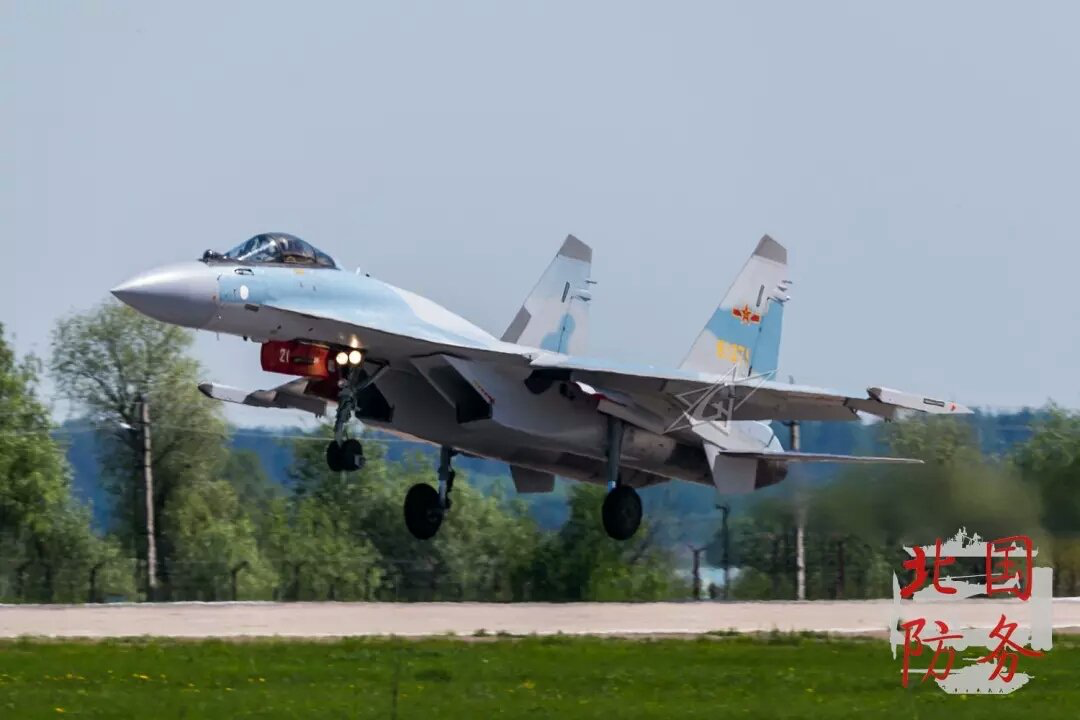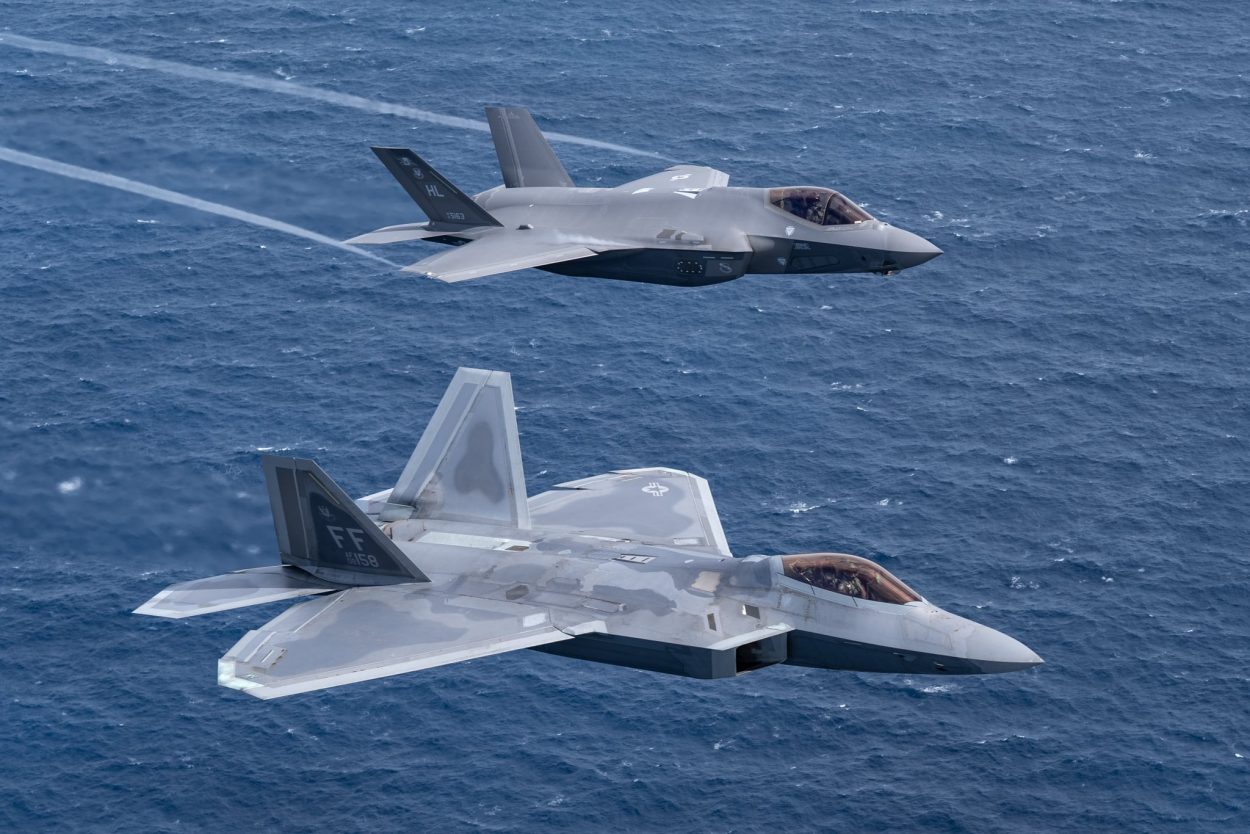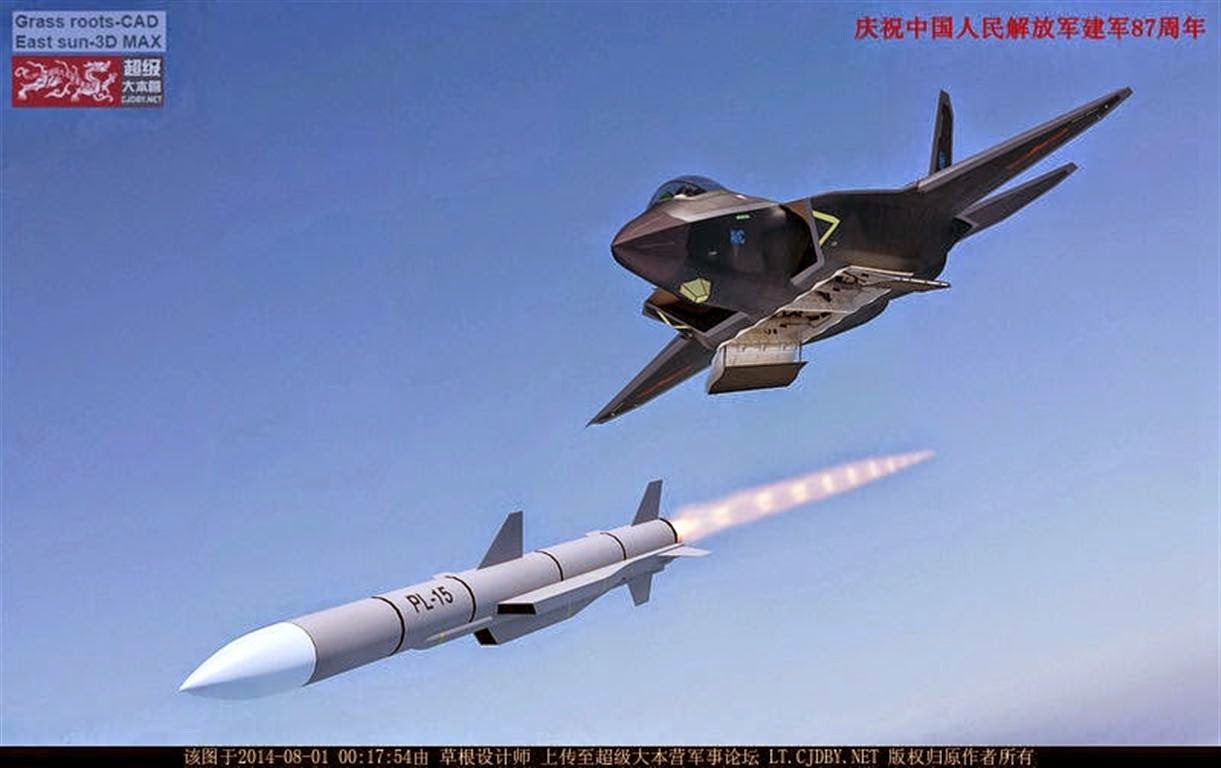By Joseph P Chacko
China is one of the countries that operate the Russian-made Sukhoi SU-35 fighter jet. Armed with deadly BVR missiles, the Chinese Su-35 can pose a formidable challenge to America’s super-advanced F-35 or F-22 stealth aircraft.
In 2017, an American F-22 fighter left the engagement area with a Russian Su-25 attack aircraft over the Syrian airspace after a SU-35 appeared on the scene. According to the Russian media, as the Su-35 moved in to engage, the F-22 Raptor crew quickly retreated.
The Su-35
The Su-35 (NATO codification – Flanker-E +) is a super-maneuverable fighter developed by the Sukhoi Design Bureau belonging to the 4 ++ generation fighter aircraft category.
The category denotes that in terms of the aggregate characteristics, the Russian Su-35 is as close as possible to a fifth-generation fighter, except for its stealth technology and an active phased antenna array (AFAR).
AFAR technologies are already widely used in developing airborne radars of modern fighters in Russia, particularly the MiG-35. The radar makes it possible to track many targets simultaneously due to electronic control of the beam position. It can detect and engage the enemy on water, land, and air, identify its class, type and size, and aim high-precision weapons.

The Russians say that the Su-35 has turned out to be quite multifunctional with the possibility of using a wide range of modern weapons and older generation weapons like unguided bombs and missiles, guided missile systems, and both with radar and infrared homing heads.
The Su-35 is a deep modernization of the Su-27 fighter, in service with the Russian armed forces since the mid-1980s. However, it significantly increased the effectiveness of combat use against air, land, and sea targets.
As noted by the developers, the design of the 35th uses the most successful technical solutions previously tested on aircraft of the Su-27 and Su-30 families—Russian aerospace forces field about 70 Su-35s.
The combat load of the Su-35 is about eight tons. The number of hardpoints for attaching high-precision missiles and aerial bombs is 12, and two more are for placing electronic warfare containers. The fighter is also equipped with a GSh-30-1 gun.
The Su-35 is equipped with a good sighting and navigation system, which provides accurate targeting and route information. The complex can simultaneously use GLONASS and GPS to correct the coordinates programmed into the plane and quickly redirected in flight.

Distinctive features of the SU-35 are a new avionics complex based on a digital information and control system, a new radar station with a long detection range for air targets and an increased number of simultaneously tracking and engaging targets and an improved power of the engines with a controlled thrust vector (UHT).
The Russians claim UHT helps with a special super-maneuverability mode. It removes the restrictions on the angle of attack so that SU-35 can go to any value, up to +/- 180 degrees.
The AL-41F-1S engine makes it possible to develop supersonic speed without using an afterburner. The experimental turbofan engine is currently the power plant for the Russian fifth-generation SU-57 stealth fighter.
The SU-35 can lose speed, take almost any position in the air, in any direction, and at any angle of attack to reach the target without compromising stability. The plane can perform a 360-degree turn to search for a potential enemy and proceed with its maneuver.
The aircraft can fire third-party weapons like the Chinese PL-15 air-to-air missile with a projected range of 300 km and is meant to scare away or destroy enemy tanker aircraft and AWACS. China has around 24 SU-35s in its inventory.
Su-35 Vs F-35 and F-22
The SU-35 has repeatedly aroused the interest of the world media and is often compared with Western models, including the newest American fifth-generation aircraft, F-35 Lightning II and the F-22 Raptor.

If the SU-35 and F-35 meet in air combat conditions, the American fighter will avoid confrontation. The F-35 “will change course and call up the F-22 or F-15C”, better suited for aerial combat. If there is no help, the F-35 will have to use its stealth and try not to fall within a close combat situation.
As mentioned above, in 2017, the F-22 withdrew from the fight over the Syrian skies. Even though the F-22 was engaging the SU-25, the Russians and American aircraft are not known to make aggressive moves when they meet. They are known to slow down for posing for photographs or waving hands to each other.
Beyond Visual Range
The Russians claim the SU-35’s Irbis radar can detect the American 5th generation F-22 Raptor fighters. But the F-22, F-35, and even the F-15 have more advanced radars and are designed for long-range combat along with long-range missiles.
The SU-35 also has long-range missiles. The SU-35S boasts a powerful electronic jamming system with a “digital radio frequency memory jamming suite”, which can reportedly knock the American AIM-120 AMRAAM missile off course.
The US is developing AIM-260 Joint Advanced Tactical Missile, given the arrival of the Chinese PL-15 missile in 2016. The range of the PL-15 is estimated to be 200 km. China is also known to be developing a PL-21 missile with more than 300 km range.

The Chinese long-range missile integrated with a potent aircraft like the Su-35 is sure to keep the supporting aircraft like the US AWACS and refuellers at bay, leaving the F-35 and F-22 short-legged.
Russia also fields Vympel R-37 (NATO: AA-13 Axehead) hypersonic air-to-air missile and its variants with an estimated range of 200 km. The R-37M has a jettisonable rocket booster that increases the missiles range to 300–400km.
MiG-31BM interceptors, SU-35S and SU-57 multirole fighters are supposed to be armed with R-37M missiles. The tests on the Su-35S were to begin by the end of 2020, but the news of actual testing is yet to appear in the Russian media.
The range estimates for R-37M and PL-15 vary from 150 to 300-400 kilometers, depending on the type of target and the trajectory.
Within Visual Range
The American F-15 is more likely to get into close combat with the SU-35. The F-22 is maneuverable, but the Americans may not like to find out if it can beat the SU-35 in a close fight as an F-22 costs $232 million per plane versus just $70 million for the Su-35.
The F-35 is not built for maneuverability and hence is most like unsuitable for combating the Super maneuverable Su-35.

The maneuverability of the SU-35 is a huge lifesaver in both BVR and WVR. Needless to say, SU-35 is a highly efficient aircraft.
US fourth-generation fighters no longer possess the undeniable technical advantages they once had in the past and even fifth-gen ones are vulnerable especially the F-35s. The US must invest in next-generation fighter jets to replace its existing fleet as soon as possible to evade both Russian-origin jets as well as missile systems like the S-400s and S-500s.
(Joseph P Chacko is a publisher, columnist and author. He writes on defense and strategic affairs and occasionally other topics. He tweets @chackojoseph)




